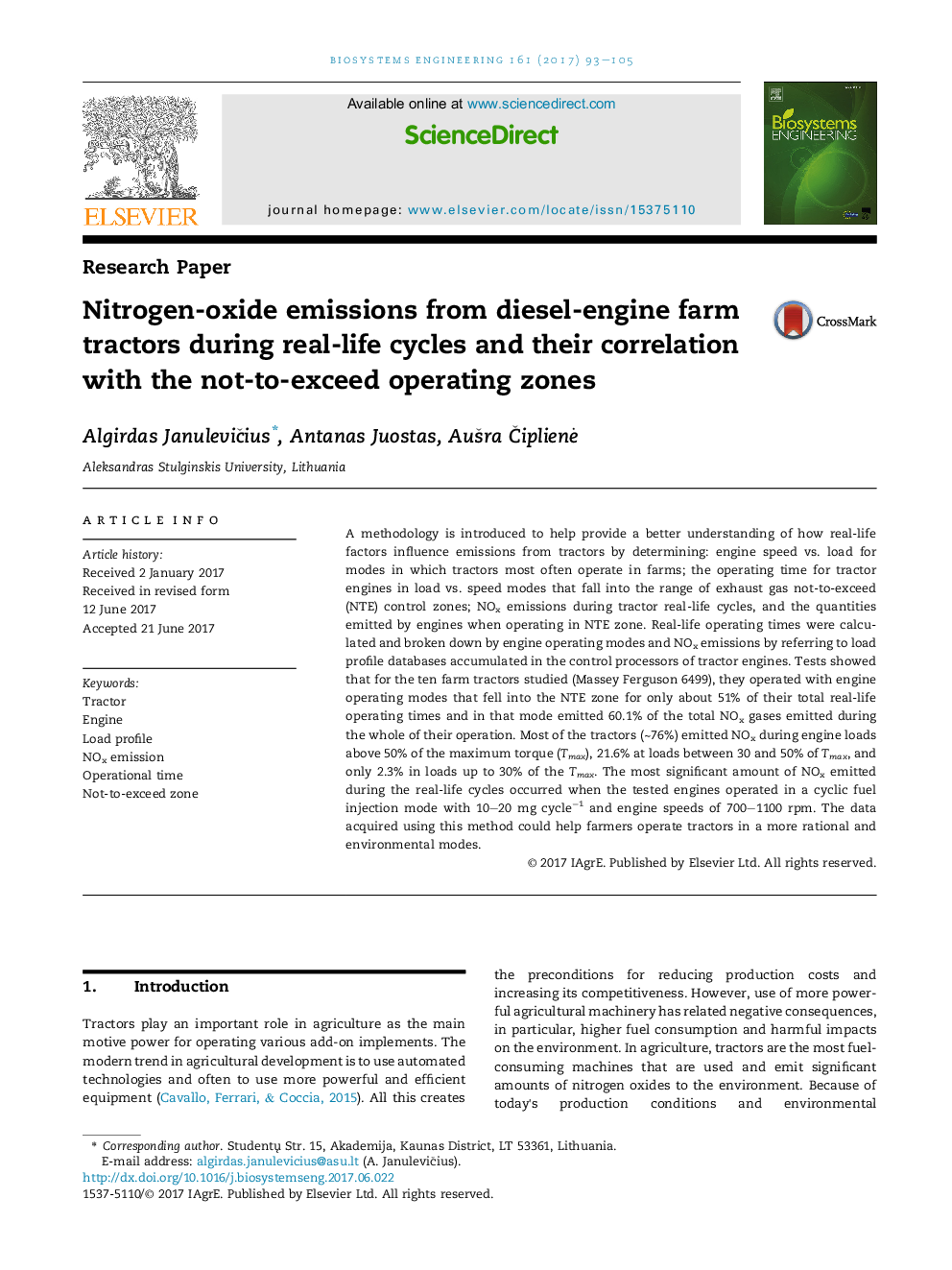| Article ID | Journal | Published Year | Pages | File Type |
|---|---|---|---|---|
| 5471797 | Biosystems Engineering | 2017 | 13 Pages |
Abstract
A methodology is introduced to help provide a better understanding of how real-life factors influence emissions from tractors by determining: engine speed vs. load for modes in which tractors most often operate in farms; the operating time for tractor engines in load vs. speed modes that fall into the range of exhaust gas not-to-exceed (NTE) control zones; NOx emissions during tractor real-life cycles, and the quantities emitted by engines when operating in NTE zone. Real-life operating times were calculated and broken down by engine operating modes and NOx emissions by referring to load profile databases accumulated in the control processors of tractor engines. Tests showed that for the ten farm tractors studied (Massey Ferguson 6499), they operated with engine operating modes that fell into the NTE zone for only about 51% of their total real-life operating times and in that mode emitted 60.1% of the total NOx gases emitted during the whole of their operation. Most of the tractors (â¼76%) emitted NOx during engine loads above 50% of the maximum torque (Tmax), 21.6% at loads between 30 and 50% of Tmax, and only 2.3% in loads up to 30% of the Tmax. The most significant amount of NOx emitted during the real-life cycles occurred when the tested engines operated in a cyclic fuel injection mode with 10-20 mg cycleâ1 and engine speeds of 700-1100 rpm. The data acquired using this method could help farmers operate tractors in a more rational and environmental modes.
Related Topics
Physical Sciences and Engineering
Engineering
Control and Systems Engineering
Authors
Algirdas JanuleviÄius, Antanas Juostas, AuÅ¡ra ÄiplienÄ,
